
Trailer - Atlantic: The Unsolved Mystery of Peter Bergmann
An original podcast from The Irish Times
In a three-part podcast, first published in 2019, Irish Times Senior Features Writer Rosita Boland explores the mystery in detail. Go here to listen to the episodes or listen to the trailer and read about the story below.
IN THE EARLY MORNING of June 16th, 2009, a sea fog was hovering over Rosses Point beach, in Co Sligo. It was just beginning to lift soon after 6am, when Arthur Kinsella and his son Brian drove into the beach’s car park after a short journey from their home, in Cartron.
Brian Kinsella was training for a triathalon, and he ran ahead of his father across the sand, eager to enter the Atlantic and swim.
The tide was out that morning, and as Arthur Kinsella came on to the beach he caught sight of something unusual to his right. He knew Rosses Point beach intimately from many morning expeditions. He went closer, to the unfamiliar object not far from the slipway, close to rocks.
He looked about 65, I thought. We walked around the body, just to make sure that he was dead, and I actually placed my hand on his ankle, and it was marble cold
This is what Arthur Kinsella found. “It was the body of a person, and he appeared to have drowned and was lying face downwards on the sand.”
He called to his son to come back from the water. The fog had almost totally lifted by then. He noted that there were no footprints anywhere around the body, which appeared to have washed up.
“He looked about 65, I thought,” he says. “We walked around the body, just to make sure that he was dead, and I actually placed my hand on his ankle, and it was marble cold.”
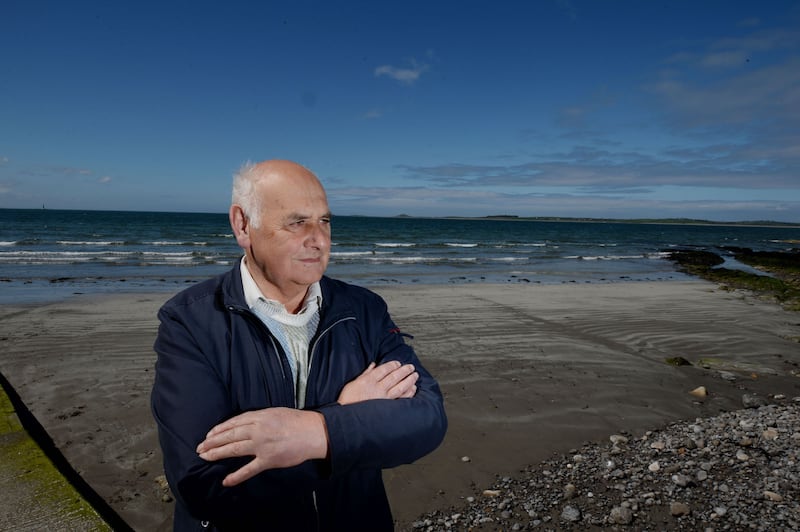
SEVEN KILOMETRES FROM Rosses Point, Sgt Terry MacMahon had been on duty since 6am at Sligo Garda station. He was 45 minutes into his shift when the call from Arthur Kinsella came in about the body on the beach.
MacMahon dispatched a car but did not go straight away himself. “I actually went to a storeroom here in the station, and did a bit of hunting and got a tarpaulin kind of a thing, because we knew one of the things we needed to do if there was a body out there was to cover it, away from the public gaze,” he says.
MacMahon arrived with the blue tarpaulin about 10 minutes after his colleagues, who were taking statements from the Kinsellas.
“It was quite obvious he was dead,” MacMahon says. “A grey-haired gentleman, he looked to me like he hadn’t been that long in the water.”
MacMahon noted that the dead man was oddly dressed for a swimmer. He had on a pair of purple striped Speedo-type swimming trunks, with his underpants over the top and a navy T-shirt tucked into them. This was only the first of a number of strange things about the dead man on the beach.
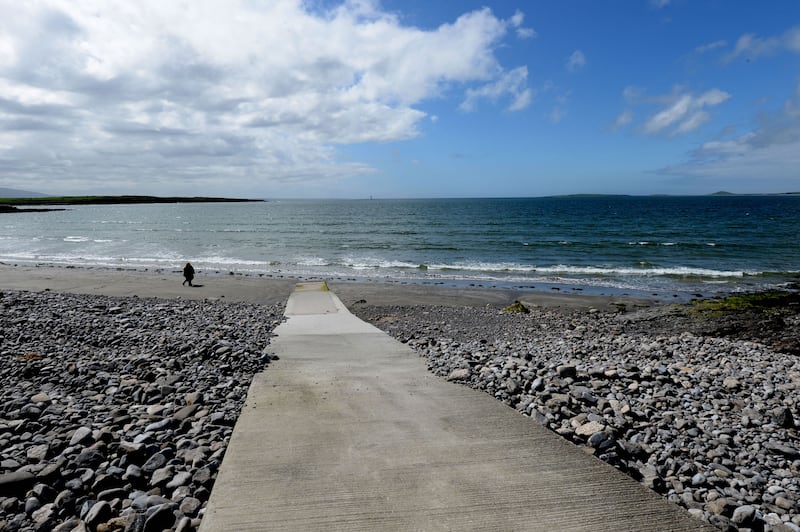
ON THE AFTERNOON of June 12th, 2009, a Friday, a tall thin man with short grey hair and glasses was captured on CCTV cameras at Derry bus station. He was wearing a black leather jacket and carrying two black bags, one a holdall-type bag, with two handles, the other a laptop-type bag slung over his shoulder.
He was looking for the Sligo bus, which was leaving at 4pm. Two hours and 28 minutes later the man was seen, again on CCTV, getting off it in Sligo.
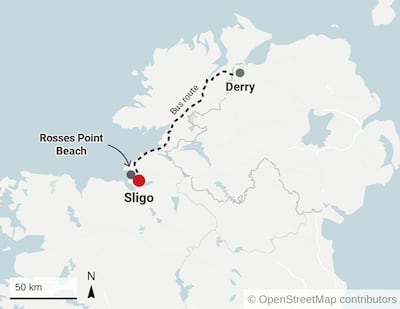
The town’s bus and train stations are both within walking distance of several hotels. The tall thin man appears to have been unaware of this, as he got into a taxi and asked the driver to bring him to a cheap place to stay.
The driver first went to the Crúiscín Lán guest house, on Connolly Street, but it was full. Although taxis do meet buses and trains in the town, Sligo’s one official rank is on Quay Street, outside Sligo City Hotel, and it is to this hotel they went next.
CCTV recorded the man, who was later reported to have had an Austrian or German accent, entering it at 6.52pm. A receptionist checked in him. A decade ago a single-occupancy room with breakfast cost €65. The man paid in cash, in full, for three nights and was allocated room 705.
The name he wrote in the hotel register was Peter Bergmann. He was not asked to produce any proof of identity.
It emerged that during his short stay Peter Bergmann had left the hotel 13 times, carrying a full plastic bag. Each time he returned he was no longer carrying anything
Like many public spaces, Sligo City Hotel has a number of CCTV cameras. One points over the reception desk, another at the front door, through which all guests must come and go. Over the next three days the guest in room 705 came and went a number of times.
His movements became puzzling only when the Garda later reviewed CCTV footage from the hotel, and from other businesses around the streets of the small town.
It emerged that during his short stay Peter Bergmann had left the hotel no fewer than 13 times, carrying a purple plastic bag that was evidently full of something.
Each time he returned he was no longer carrying anything. Like so much else about this case, it’s unclear if the bag was now in a pocket of his black leather jacket or if he had a stash of them in his hotel room.
Objects don’t vanish by themselves; suddenly disappear like smoke. Back in 2009 John O’Reilly was the detective inspector attached to the Sligo-Leitrim division, and he oversaw the case that was first logged as Unidentified Male on Rosses Point Beach.
Despite the extensive network of CCTV cameras across Sligo town a decade ago, O’Reilly reports that not a single piece of footage showed Peter Bergmann disposing of the contents of this bag, 13 times over. “Not once does it show anywhere where he may have disposed of that property,” he says.
Nor is there any evidence that Peter Bergmann was meeting someone in Sligo and passing these things on to that person, or persons. In all the footage he features in, he is not once seen using a mobile phone, or in conversation with anyone, other than functional transactions at the hotel reception desk and the bus station.
What does O’Reilly think may have been in those bags? “Personal effects. But, you know, we can talk about that until the cows come home, but we can’t speak about what we don’t know. But I’d imagine he had clothing or personal effects, possibly a passport.”
PETER BERGMANN ARRIVED in Sligo on a Friday. On the Saturday afternoon he walked around the corner from the hotel to the town's main post office. He bought 10 82c stamps and was also given airmail stickers.
Back in 2009 it cost 55c to post a letter within Ireland; an 82c stamp would take a letter to the rest of the world.
This transaction was captured on CCTV. Sligo post office has boxes both inside and outside the building. There is a CCTV camera over the boxes that stand near its left-hand entrance. (There are two doors; the other is to the right.) But if you post letters in the exterior boxes, there are no cameras.
“We got the CCTV footage from the post office,” says O’Reilly. “And when we went to look at it – it was downloaded by a staff member – for some strange technological reason the footage hadn’t actually gone on to the USB stick. And when we went back to the post office it was gone off their system.
“Had we had that, it is a possibility, and I stress only a possibility, we might have been able to determine if he posted letters. But we cannot say with certainty that he actually posted 10 letters anywhere.”

A PATTERN WAS beginning to emerge. Peter Bergmann was never caught on CCTV disposing of any property; or mailing letters; or using a mobile phone; or meeting anyone.
It’s difficult not to speculate that he knew where the CCTV cameras were. He did not have access to a car, so, as far as is known, he did not take his bag, or bags, farther afield.
Not one member of the passing public ever came forward to say they had noticed him as he rid himself of the contents of a large purple plastic bag, 13 times over, in daylight.
“He had training of a sort, I think,” speculates Terry MacMahon. “So it would be easy to see that he was ex-military or ex-police. Why I think that is because, in relations to the cameras, how he was able to go about his business without people learning anything more about him.”

ON THE SUNDAY, which was to be the third and final night Peter Bergmann spent in Sligo City Hotel, he again went in search of a taxi, map in hand. The man at the top of the rank outside the hotel was Gerard Higgins.
“I got out of my minibus to say hello, because a man with a map wishes to go somewhere,” Higgins says. His passenger told him he was looking for a place to swim, and pointed to Strand Hill on the map. Higgins knew Strand Hill was a surfing beach, and instead suggested Rosses Point, with its beautiful long sandy beaches. His passenger agreed and, on Higgins’s suggestion, sat up front with him. “He was a bit chatty, asking if there were buses going out there, and I told him, yes, about once every hour.”
Higgins particularly recalls this male passenger, who told him he was from Austria, because of a prominent gold tooth. Later examinations of Peter Bergmann’s body were to reveal he had a gold tooth in the upper back right of his mouth.
Although his passenger with the map and the gold tooth had asked to be taken to a beach suitable for swimming, he did not actually swim. “We drove around Rosses Point. I showed him the two beaches, and I stopped at the car park at the entrance to the beach. He did not get out but then said, Can you bring me to the bus station?”
Higgins brought Peter Bergmann back to Sligo and dropped him off, as requested, at the station. “I gave him my card and told him, if he wanted a taxi again, to call me. He was grateful and paid me with a brand-new €20 note.”
On Monday, June 15th, 2009, Peter Bergmann requested a late checkout of 1pm. When he appeared at hotel reception to return his key he was wearing a long-sleeved pale-blue shirt, black tank top, dark trousers and black leather jacket.
He was carrying three bags: the holdall and the bag with the shoulder strap he had had when checking in; and the purple plastic bag.
He checked out shortly after 1pm. No taxi driver reported taking him the short distance to Sligo bus station, so it is assumed he walked.
When he was caught on CCTV arriving at the bus station, at 1.32pm, he no longer had the black holdall.
If anyone was going for a swim you’d usually know: they’d have a towel rolled up and togs rolled up. He wasn’t like that at all. He looked like a man that was on business
It’s possible that everything that had been in it when he arrived at the hotel had since been disposed of, in bins or other places around the town, unseen either by CCTV or members of the public. The bag looked to be a soft one; when empty, it would fold up and slot easily into a bin.
At 1.32pm the manager of the little bus-station cafe sold Peter Bergmann a cappuccino and a toasted sandwich. He sat at one of the few tables, alongside a woman to whom he did not speak.
During the time he sat at the table he took a piece of paper from his pocket and wrote something on it. Then he tore it up. Like virtually all of his other belongings, it was never retrieved. The cafe at the station closed last year.
“On that particular day I was returning from a break just after two o’clock when this gentleman approached me and asked about the bus to Rosses Point,” says Vincent Dunbar, who was the depot inspector at Sligo bus station.
The gentleman was Peter Bergmann. He knew that the next bus to Rosses Point left at 2.40pm but not which bay it left from, which was the subject of his question to Dunbar.
There were in fact three buses after the 2.40pm service that served Rosses Point at the time. But Peter Bergmann, although he had taken a taxi out to the beach the previous day, was now instead focused on making the 2.40pm bus. It was to emerge later that he did not have a reservation at any hotel or other accommodation in the vicinity.
“You’d think he was maybe just going to meet somebody, or going on business,” Dunbar says.
“I learned afterwards he went for a swim, but he didn’t strike me as a man that was going for a swim... the way he was dressed and what he was carrying with him. If anyone was going for a swim you’d usually know: they’d have a towel rolled up and togs rolled up,” he says. “He wasn’t like that at all. He looked like a man that was on business.”
Peter Bergmann did not thank Vincent Dunbar for his help. “He just turned and walked away,” he says. “He just looked like a man that was stressed or in pain or not himself.”

THAT JUNE DAY the temperature reached 17 degrees in Sligo, and many people came to Rosses Point to swim and walk the beach. There was to be one high tide, at 12.06pm, at a height of 3m over the average low-water mark. The next high tide was to be at 12.25am.
The Sligo bus dropped off its passengers at 3pm at the stop outside the Yeats Country Hotel. Nobody at the hotel ever recalled a tall thin man dressed in black coming in for a coffee, or food, or to use the bathroom.
At 4pm Peter Bergmann was seen on the beach with a black bag over his shoulder. At 5pm he was seen near the yacht club at the far left of what local people call the first beach.
A sign close to the first beach points to a place that has existed for more than a century: Deadman’s Point. This is the small headland that extends out towards Coney Island, or Inishmulclohy. There’s a story to the name, and like so many stories in Sligo it’s one with a Yeats connection.
The story goes that a seaman from another land died as his ship was entering Sligo Bay and was left behind and buried there, as the crew did not want to miss the tide. Oceans carry many superstitions; the seaman was buried with a loaf of bread and a shovel, should he wake again.
Inspired by the story, Jack B Yeats painted Memory Harbour; the Yeats brothers often holidayed at their uncle’s house at Rosses Point, Elsinore, which is now in ruins.
At 9.10pm Peter Bergmann was seen by two women, carrying something; they weren’t sure what it was.
At 9.30pm he was seen on the beach by Dermot and Paula Lahiff, a husband and wife who had driven from their home to watch the sunset.
“We were parked at the upper car park,” Paula says. “There was this man walking parallel to the shore. He had his trousers rolled up to his knees, and he was wearing a black jacket and he was kind of plodding ponderously along.”
The final sighting of Peter Bergmann while he was alive was at 11.50pm. He was carrying a plastic bag, and walking by the edge of the ocean. High tide was to arrive within half an hour
By that time of the day the crowds on the beach had dissipated, so the people who remained were more noticeable. Dermot Lahiff was watching the sun go down as he sat beside his wife in their car. The man with the black jacket was crossing back and forth against the spot where the sun they had come to watch was going down; it was illuminating him in silhoutte.
Dermot Lahiff describes the man they later knew as Peter Bergmann as “stepping very deliberately” when he paddled barefoot through the water’s edge, “one foot, then the other.” It struck him “how strange his movement was, and it appeared to me to be some kind of a ritual in his procedure from right to left”.
Lahiff recalls being suddenly struck by scenes from growing up, in Galway. “It reminded me of old photographs I would have seen from my childhood in Salthill; country folk visiting the beach, bathing with their trousers rolled up.”
At 10.30pm Peter Bergmann was seen by a member of the public with a plastic bag and wearing his glasses.
At 11pm he was again seen, by a different person, with a plastic bag.
Ten minutes later he was seen, still wearing his glasses, sitting on one of the benches that overlook the first beach.
The final sighting of Peter Bergmann while he was alive was by a woman at 11.50pm. He was carrying a plastic bag, and walking along by the edge of the incoming ocean. High tide was to arrive within half an hour.

AT 8AM ON JUNE 16th the man found on the beach near Deadman's Point was pronounced dead at the scene by Dr Valerie McGowan. His body was taken to Sligo University Hospital to await an autopsy the following day.
Terry MacMahon and his colleagues from Sligo Garda station remained on Rosses Point beach, searching for the rest of the clothes and footwear that had clearly been discarded somewhere. They discovered a pile of clothes on a rock on the beach, clothes that matched the description of what witnesses were to later say they had seen the solitary tall thin man wearing the previous day; clothes that no other swimmer ever came to reclaim.
“It was as if he had taken off his shoes and then taken off his socks and then put his socks into his shoes and then his trousers, and then I think there was a kind of black V-neck jumper, and they were all folded nice and neatly one on top of the other.”
The clothes had had their labels cut out, as had the three items of clothing the dead man was found wearing, although the name of some brands remained.
The clothes and items in the pockets that were found on Rosses Point beach that morning are still in storage at Sligo Garda station, in a large cardboard box with a label on the lid that reads: “Clothing/Personal Items of Unidentified Body found at Rosses Point on 16/06/2009”.
It’s a long time since anyone looked at these clothes that Peter Bergmann folded so carefully and left on a coastal rock at nightfall 10 years ago.
When the items are lifted out of their storage box, sand starts to fall from the T-shirt Peter Bergmann was wearing when he was found. Tiny grains from Rosses Point scatter across the desk, each one a bright point of light.
All the evidence had seemed to point towards a man who waited until darkness to go swimming, perhaps with the intention of never returning. But he had not died by drowning
This is what was recovered from the beach by the Sligo gardaí.
The clothes Peter Bergmann was wearing: a navy T-shirt; a pair of navy underpants; a pair of Speedo-type swimming trunks, with pink and purple stripes; a waterproof quartz watch, found on his left wrist.
Found on the rocks were: black leather Finn Comfort shoes, size 44, manufactured in 2002 in Germany; dark socks; a black leather C&A jacket; navy C&A chino trousers; a black sleeveless Tommy Hilfiger jumper; a black leather belt, called Key West USA, made in Italy.
Distributed in various pockets were: €140 in notes and €9 in coins, in an envelope; a packet of tissues; 55mg of asprin tablets, made by Bayer, manufactured in the Czech Republic and distributed in Germany; Hansaplast sticking plasters; a bar of hotel soap in an unopened blue plastic wrapper printed with Mild Soap, Hotel Care. (When subsequently investigated, it was not of a brand made or stocked in any hotels in Ireland.)
Not found among the possessions were: Peter Bergmann’s glasses; the 10 82c stamps he had bought in the post office; the long-sleeved blue shirt he was wearing when he left Sligo City Hotel; the black shoulder bag; the purple plastic bag.
There was no ID of any kind. He had not been asked for any ID when he checked in at the hotel.
“They are obliged to ask for ID,” says John O’Reilly. “The legislation is very clear. All hotels and B&Bs; legally, they are obliged,” he stresses. “Do they do it? I think we both know they don’t.”
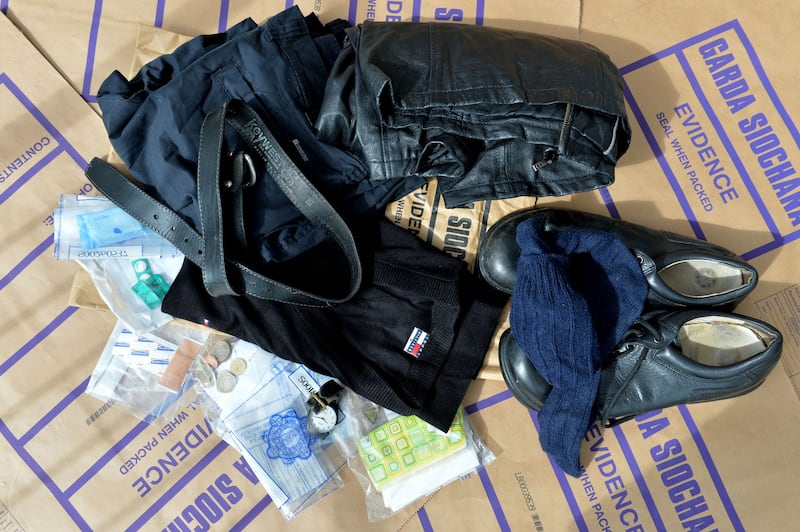
ALTHOUGH THE MAN who gave his name as Peter Bergmann was not asked for ID at the hotel, he did have to fill in his details on its guest register. The home address he gave was Ainstettersn 15, Wien 4472.
There is no such street as Ainstettersn in Wien, which is to say Vienna. Austria does have a postal code system, in operation since 1966, using combinations of four digits, but Vienna’s codes run only from 1000 to 1901. The address Peter Bergmann gave was a fabrication.
He ended his surname in the register with two Ns. The usual spelling in German is with one N.

CLIVE KILGALLEN CONDUCTED the autopsy on Peter Bergmann on Wednesday, June 17th, 2009, at Sligo University Hospital. Its results, which were not made public until the inquest on April 14th, 2010, contained two unexpected pieces of information.
Even though the dead man had been found washed up on the Rosses Point beach, the pathologist found no sign of “classical salt water drowning”. All the evidence had seemed to point towards a man who waited until darkness to go swimming, perhaps with the intention of never returning. But he had not died by drowning.
Peter Bergmann had had terminal prostate cancer; it was so advanced that Kilgallen believed he could not have been unaware of his illness. It had spread to his bones, chest and lungs. Kilgallen estimated the prognosis was “weeks at most”.
The cause of death was given as acute cardiac arrest, or, in layman’s terms, a heart attack. There was a standard toxicology report, but, as is usual, it did not test for a range of banned substances.
By the time the inquest came around, the man known as Peter Bergmann had been buried in an unmarked grave in Sligo cemetery. Six people were at the funeral on September 18th, 2009, including the undertaker and the man who dug the grave, Brian Scanlon.
“For me, as a person working in the cemetery for 30 years, it doesn’t matter if there are six people at the funeral or 600,” says Scanlon. “It’s a box that comes in the gate and has to be lowered into the ground. And that’s the way it’s been with me for a long, long time. I don’t really have any emotions around funerals. I have seen too many of them.”
The plot in which Peter Bergmann is interred was bought by the Health Service Executive to bury unclaimed bodies. It can take three people. There was already one other body in there, but there won’t be a third.
“I have been instructed not to add anyone else in now, in case he has to be exhumed. In case anyone comes forward,” Scanlon says.
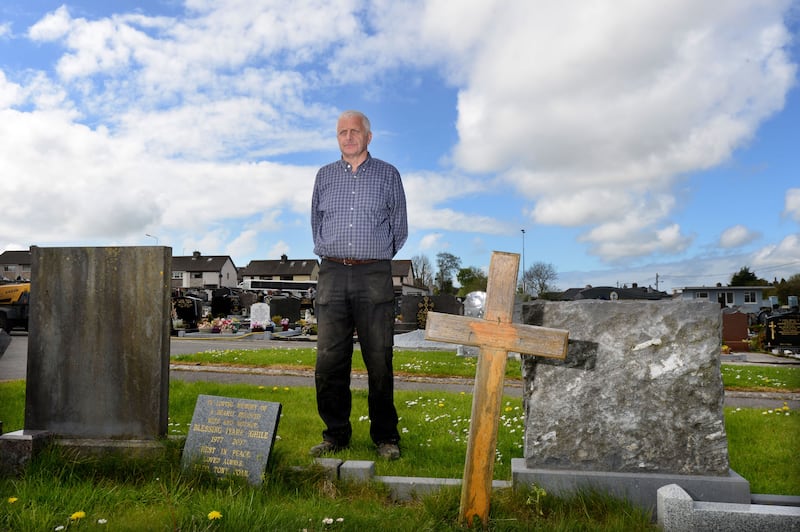
WHEN MID-JUNE TURNED into late June in 2009, the gardaí covering the case had gradually realised two things. One was that nobody was coming forward, looking for their missing family member or friend.
The second realisation took a bit longer: that the man found dead on the beach had given a false name and address, that he had gone out of his way to conceal his identity, and that he appeared to have planned to disappear at sea in Sligo – a plan that the tides or fate or unknown circumstances had prevented.
Once it became evident that Peter Bergmann was not the dead man’s real name, it was clear this was a very different kind of investigative challenge for the Sligo gardaí, and their international colleagues at Interpol.
It was, for instance, impossible to ascertain how he arrived in Ireland, and where he entered the country. The name he gave did not appear on any passenger manifest, and for foot passengers on ferries from Britain there were no identity checks.
“Normally we deal with the opposite complaint, where we have people who go missing and we can’t find them,” says Ray Mulderrig, the current detective inspector in Sligo. “This one is different, in that we have a person but we can’t fully identify who he is and we can’t return his body to his immediate family.”
Dozens and dozens of folders, in boxes held at Sligo Garda station, detail the thousands of hours spent on this case, trying to establish the true identity of the man who called himself Peter Bergmann. At one point 10 people were working on the case. There are clear images of his face, both alive and dead – a face no one has yet to publicly claim recognition of.
The case will remain open until the day – if it ever comes – when Peter Bergmann is finally identified. He didn’t suddenly emerge from some time-warp underworld in Sligo on June 12th, 2009. Nobody gets to be close to 60 without gaining friends, colleagues, neighbours and acquaintances along the way, let alone a possible family. At the absolute least, he was someone’s son.
In Mulderrig’s view, the entire scenario was “a deliberate act. It’s not someone in a state of panic or crisis. It is someone who knows exactly what they are doing and why they are doing it.”
So many questions remain about Peter Bergmann and the choices he made at the end of his life. Why Sligo? Why dispose of all his belongings? Why give a false name and address? Did he ever post those 10 letters, and, if so, who were they to? Did he intend to die by drowning? How did his cardiac arrest come on? Will anyone who knew him ever come forward?
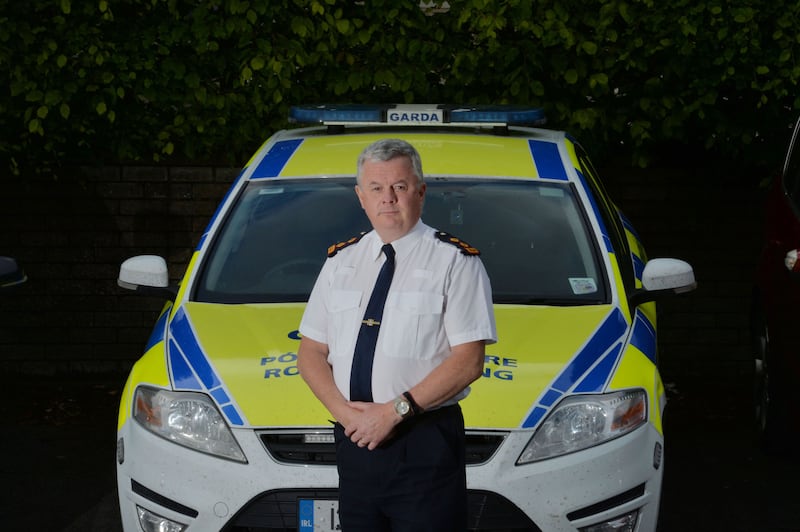
John O’Reilly, the detective inspector in Sligo-Leitrim at the time, has since moved on to be chief superintendent in Cavan-Monaghan. Unlike Garda staff who get promoted, the cases they worked on don’t leave the jurisdiction. But it’s one O’Reilly has never forgotten.
“It is one of those mysteries, and it has created so much curiosity and speculation in so many places over the years, including my own mind,” he says. “There are so many unanswered questions that will probably never be answered, but the one I would love to get answered is, Who was Peter Bergmann?”
Who was Peter Bergmann? To share information about this case, please email Rosita Boland
If you have been affected by any issues raised in this report, you can contact the following support services:
- Samaritans: call 116123, text 087-2609090, email jo@samaritans.ie
- Pieta House: call 1800-247247, text “help” to 51444, email mary@pieta.ie
- Aware: call 1800-804848
- The HSE also provides information at yourmentalhealth.ie









